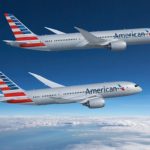
The US Department of Transportation (DoT) has given Qantas the final green light to begin joint business with American Airlines, despite Qantas being more dominant in its home market than other airlines enjoying similar commercial arrangements with American.
US Secretary of Transportation Elaine Chao approved antitrust immunity, whihc lets Qantas and American share pricing, sales and frequent flyer information as well as flight numbers.
An identical proposal by Qantas and American – the biggest airlines in Australia and the US respectively – was rejected three years ago by the Obama administration over antitrust concerns, with the DoT considering it posed a “high risk of competitive harm”.
Qantas says the new approval means it can coordinate with American Airlines “as part of a joint business to deliver new routes, more destinations, reduced travel time, lower fares, and additional benefits for frequent flyers”.
Qantas and American Airlines have worked together as codeshare partners for decades.
The first order of business for Qantas will be to introduce two new routes from Brisbane to Chicago and San Francisco.
Announced in Brisbane last month, these two new routes, which will be operated by Qantas’ Boeing 787-9 Dreamliner aircraft, are expected to launch by the end of April 2020 and will add more than 170,000 seats across the Pacific each year, Qantas confirmed.
The schedule for Qantas’ Brisbane-Chicago and Brisbane-San Francisco flights is being finalised, with fares available for sale soon.

Qantas and American Airlines will also add codeshare services to more of each other’s existing international flights between Australia and the United States, with customers able to purchase these codeshare flights in coming days.
American Airlines has similar deals in place with Japan Airlines and British Airways but, as the Dallas Morning News pointed out, “Qantas is much more dominant in its region than either of those airlines”.
When American and Qantas applied back in 2016, the DoT found that “by combining the airline with the largest share of traffic in the US-Australasia market with the largest airline in the United States, the proposed alliance would reduce competition and consumer choice”.

In the face of that, the two carriers dropped their application.
They returned with the same proposal in February 2018, just weeks after President Donald Trump took office.
Written by Peter Needham
















